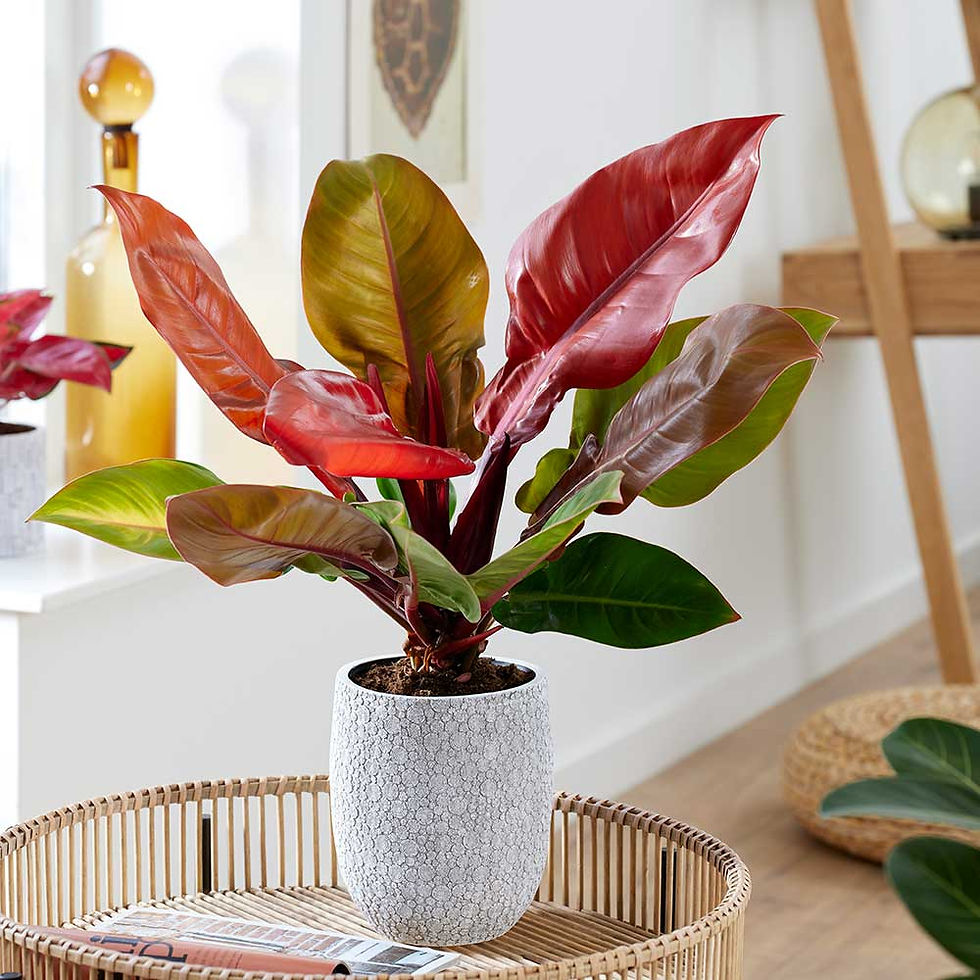
Introduction
Philodendron Prince of Orange is a hybrid species of the philodendron plant, known for its bright, orange-red foliage. It is a tropical, evergreen plant that is native to South America. This plant is easy to care for and is a popular choice for indoor gardening due to its attractive, vibrant appearance and low maintenance requirements.
Philodendrons are also considered ideal plants to keep around since they are known to filter airborne toxins such as formaldehyde, benzene and trichloroethylene.
It prefers well-draining soil, bright, indirect light, moderate watering and warm conditions (18-27 degrees Celsius) and plenty of humidity.
Common Issues
Philodendron Prince of Orange is relatively hardy, but can face the following issues:
Root Rot: Over-watering can lead to root rot, which can cause the plant to wilt and eventually die. The plant should never be left sitting in permanently wet soil, so make sure to only water about once a week. Even if the first 4 or 5cm of soil is dry, there's no need to add water yet! These plants are used to surviving in dry climates.
Lack of Light: The plant requires bright, indirect light to thrive. If it does not receive enough light, its leaves may turn yellow and become limp. Orange leaves turning green can also be an indication that your plant isn't getting enough light.
Pests: Philodendron Prince of Orange is susceptible to pests such as spider mites, mealybugs, and scale insects. There are many resources available online to help deal with these pests and controlling them can be as simple as using jets of water to spray them off (spider mites), or applying remedies such as neem oil for more stubborn bugs.
Nutrient Deficiency: Yellowing leaves and stunted growth can be a sign of a nutrient deficiency.
Extreme Temperatures: The plant is not tolerant of extreme temperatures, both hot and cold, which can cause damage to the leaves and affect its overall health.
By avoiding these issues and providing the proper care, your plant can grow and flourish.
Watering
In general, it does not need misting or overly moist conditions. Placing inside the bathroom or kitchen area may provide an ideal amount of moisture without going overboard.
Ensuring Adequate Nutrients
To make sure your Philodendron Prince of Orange gets enough nutrients, follow these tips:
Use well-draining soil: Use a potting mix specifically formulated for tropical plants or mix your own using equal parts peat moss, perlite, and vermiculite.
Fertilize regularly: Fertilize your plant every 2-4 weeks during the growing season (spring and summer) with a balanced, water-soluble fertilizer.
Provide micronutrient supplements: Once a month, you can supplement your plant's regular fertilizer with an iron chelate or other micronutrient supplement to ensure it receives all the nutrients it needs to grow and stay healthy.
Water with nutrient-rich water: If your tap water is low in nutrients, consider using filtered or rainwater to water your plant.
Repot as needed: Over time, the nutrients in the soil can become depleted. If you notice your plant's growth slowing, or if the soil appears worn out, consider repotting it into fresh soil.
Best Placement
Being a tropical plant, Philodendron Prince of Orange is best suited for bright, indirect light. Some examples of indoor spaces where this plant would receive enough light are:
Windowsills with east or west-facing windows
Rooms with large, north-facing windows
Rooms with bright, fluorescent lighting
Rooms with skylights
A few feet away from south-facing windows
It's important to remember that direct sunlight can be harmful to this plant, so it's best to place it in an area where the light is bright, but indirect. If you notice the leaves becoming pale, you can move the plant to a brighter spot. Conversely, if the leaves are yellowing or becoming scorched, it may be receiving too much light and should be moved to a slightly shadier spot.
An area with dappled shade is probably your best bet when it comes to planting Prince of Orange outside.
Conclusion
With proper care, Philodendron Prince of Orange can grow up to 3 feet long and is a great addition to any indoor plant collection. For an even more comprehensive source of information on caring for your stunning plant, you can check out this article.




